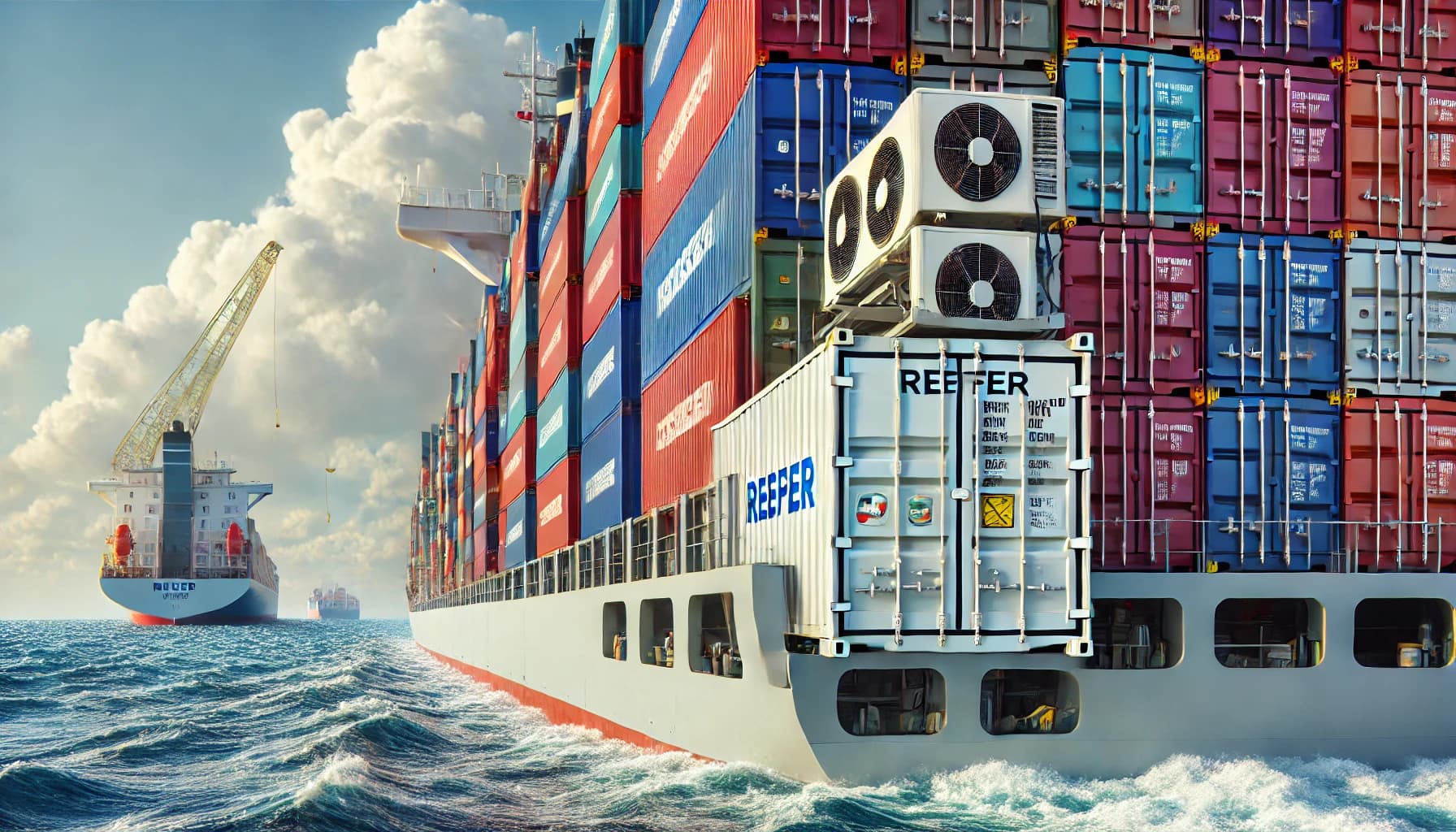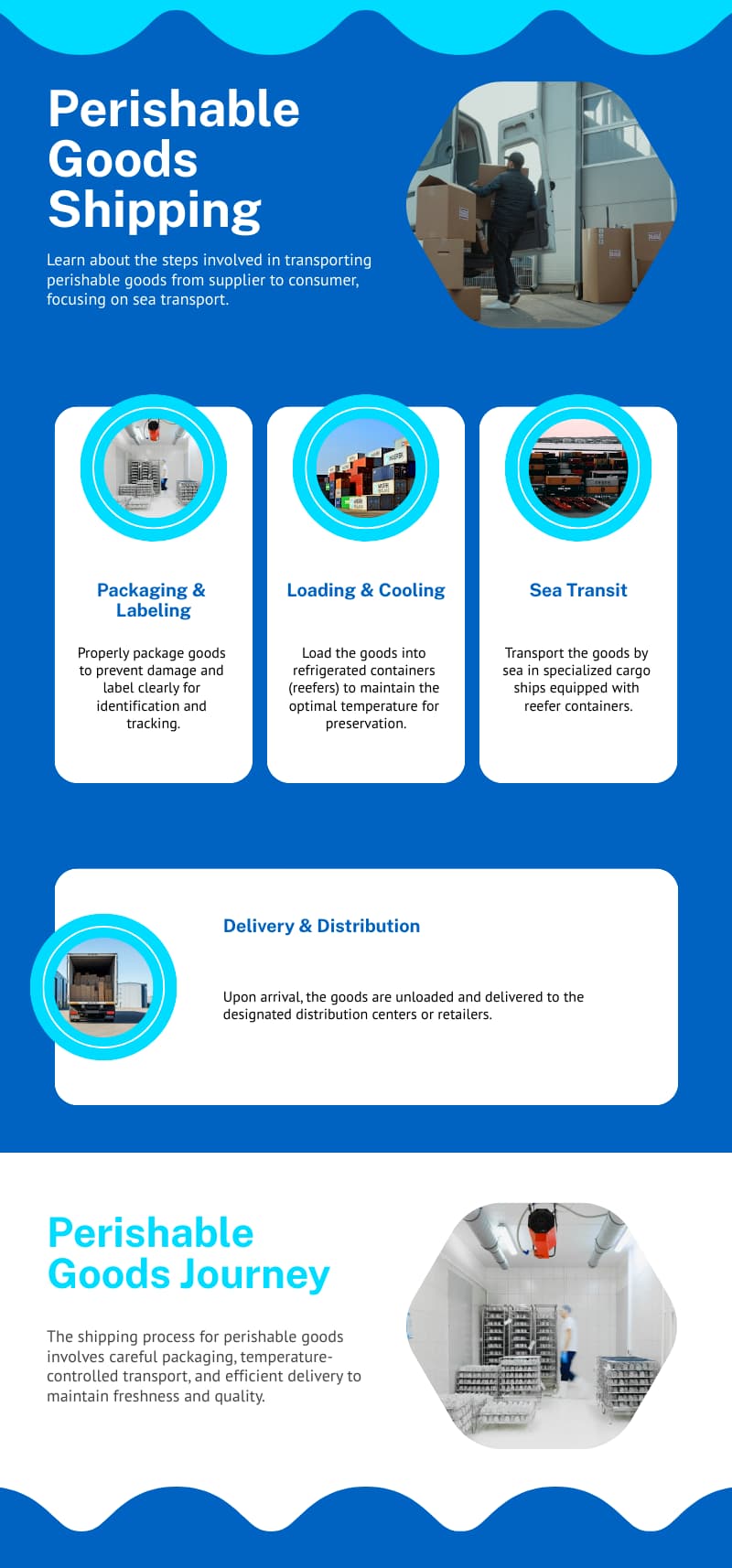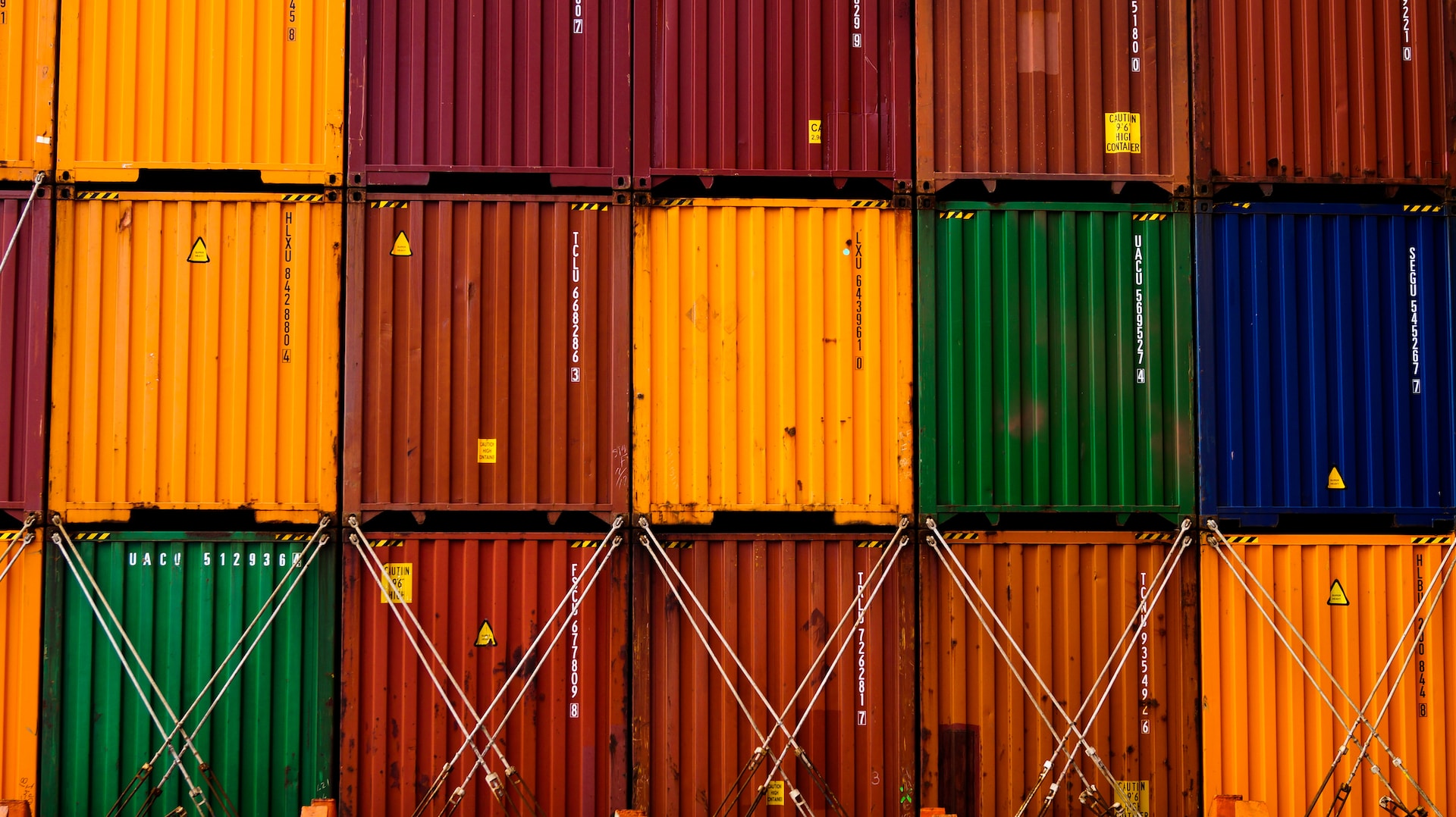Challenges & Solutions: How are Perishable Food Items Shipped?
Jan 07, 2025 · 7 mins read ·
Shipping & Vessels
Did you know that about 40% of food is lost or wasted before consumption? According to theUN Food and Agriculture Organization, a significant portion of this waste happens during transit. This makes you wonder—how can we prevent spoilage during shipping?
Transporting perishable food items via sea or other modes is one of the most complex processes in logistics. These shipments require precise temperature control and unique handling to stay fresh. Without proper care, food can spoil before it reaches consumers or, worse, become a health hazard.
In this post, we’ll explore the essentials of shipping perishable food items, the challenges involved, and the innovative solutions that keep food fresh across the globe.
What are perishable food items? A quick guide
Perishable food items are those that can spoil or become unsafe to consume if proper environmental conditions—such as temperature and humidity—are not maintained. Common examples include:
- Fresh fruits and vegetables
- Dairy products like milk and cheese
- Meat, poultry, and seafood
- Eggs and live fish
- Prepared meals and baked goods
- Flowers and some prescription medications
Pathogenic bacteria, which cause foodborne illnesses, and spoilage bacteria, which affect the flavor, smell, and texture of food, are the primary culprits behind spoilage. Under normal circumstances, many perishables cannot be stored for more than seven days without deteriorating.
Read more: What Are Shipping Alliances in the Maritime Industry?
Challenges in shipping perishable food items
Shipping perishable goods—whether locally or internationally—presents unique challenges. Let’s dive into the most significant obstacles:
1. Extreme temperatures
Maintaining the correct temperature is critical for perishable shipments. Exposure to temperatures outside specified ranges can lead to spoilage. For instance:
- Excessive heat can melt or rot products.
- Freezing temperatures can damage items like fresh produce.
2. Regulations and specifications
Different regions have strict rules on how perishable items should be transported, packaged, and stored. For instance, the European Union has rigorous standards for food imports, while Australia and New Zealand emphasize biosecurity measures. Non-compliance can lead to shipment rejections or fines.
3. High freight costs and delays
Shipping perishables internationally requires planning for potential delays, such as:
- Severe weather
- Port congestion
- Slow customs processes
Any delay can compromise the freshness of the cargo.
4. Risks of cross-contamination
Improper handling or packaging increases the risk of contamination, which can lead to health hazards. Businesses must ensure hygiene standards are met throughout the supply chain.

Solutions for shipping perishables
Modern technology has revolutionized perishable shipping. Here are the most effective solutions:
Reefers (refrigerated containers)
Reefers are temperature-controlled shipping containers designed to transport perishable goods. Here’s how they work:
- Temperature control: Reefers maintain temperatures between +25°C and -25°C, depending on the cargo. Specialized units can even go as low as -70°C.
- Ventilation: Fresh air circulation removes heat and gases, essential for items like fruits and vegetables.
- Humidity control: Adjustable humidity levels help prevent spoilage.
- Drainage: Built-in drainage systems prevent water buildup while blocking external contaminants.
Practical tips for shipping perishables
Whilst reefer containers have undoubtedly had a significant impact on the shipping of perishable goods internationally and domestically, there are still further steps that can be taken in order to reduce the potential for spoilage in transit and these include:
- Choose the right packaging
- Label clearly
- Plan for delays
- Work with reliable partners
Unfortunately, spoilage of some perishable items is inevitable given the sheer volume of perishable goods that are shipped each and every day around the world. However, by implementing these best practices, along with the user of reefer containers, the amount of spoilage can be drastically reduced.
Innovations in eco-friendly perishable shipping
Sustainability is a growing concern in logistics. Here are some innovations transforming the industry:
- Bio-based packaging: Materials that are biodegradable and can maintain food freshness.
- Solar-powered reefers: Renewable energy solutions reduce carbon footprints.
- Reusable containers: Durable, eco-friendly containers minimize waste.
Many shipping companies, as well as food producers, are looking at ways to make their businesses more sustainable and some of these solutions are contributing to that shift we are seeing across the sector.
Regional insights
If you are shipping perishable goods internationally, it pays to understand the different legislations and laws that exist in the markets that you are shipping into as these can have a huge impact on your business. Here are some key insights from across the world:
Shipping in the UK and Europe
Regulations in these regions emphasize traceability and hygiene. Businesses must comply with the European Union’s stringent import rules.
Australia and New Zealand
Biosecurity laws are a priority, particularly for fresh produce and meat. Ensure documentation is accurate to avoid delays.
The USA
In the USA, the Food Safety Modernization Act (FSMA) enforces strict guidelines for the transportation of perishable goods. Refrigerated transportation is closely monitored, and shippers must ensure that cold chains remain unbroken. The demand for organic and fresh produce is high, particularly in urban centers, making efficient logistics critical.
The Philippines
The tropical climate in the Philippines poses unique challenges for shipping perishables. High humidity and temperatures require robust cooling solutions. The local demand for fresh seafood and imported fruits means reefers are essential for maintaining quality. Additionally, regional trade agreements in Southeast Asia facilitate smoother cross-border transportation.
Comparison of shipping methods for perishables
Whilst we have predominantly focused on shipping goods by sea, perishable goods are shipped worldwide using air, road and rail and most perishable goods require multi-modal transport to get from source to destination. Here is a breakdown of the cost and speed of using different transport methods to move perishable goods:
| Mode | Cost | Speed | Ideal Use Case |
| Air Freight | High | Fast | Small, high-value items |
| Sea Freight | Moderate | Slow | Bulk shipments, frozen goods |
| Road Transport | Low | Moderate | Local distribution |
| Rail Transport | Moderate | Moderate | Regional Shipments |
Conclusion
Shipping perishable food items is a delicate process, but innovations like reefers and eco-friendly practices are making it more efficient. Whether you’re shipping locally or internationally, understanding the challenges and solutions can help ensure your cargo arrives fresh and safe.
Want to learn more about shipping logistics or explore maritime career opportunities? Visit Martide’s website or download our free mobile app today!
This blog post was originally published on April 14th 2023 and update on 7th January 2025.

Gavin Hirst
Gavin is a contributing writer to the Martide blog who covers topics ranging from life at sea to maritime crew management software. A native Brit who is now based in Auckland, NZ, Gavin is also an SEO expert and partner in a successful digital marketing agency that has offices in New Zealand and the United Kingdom.
New Zealand



